Copyright © 2025 Motivate Media Group. All rights reserved.
Lighting Design: A shift towards the human-centric and the environmental
Lighting design is becoming more human-centric and environmentally-friendly, writes Esra Lemmens
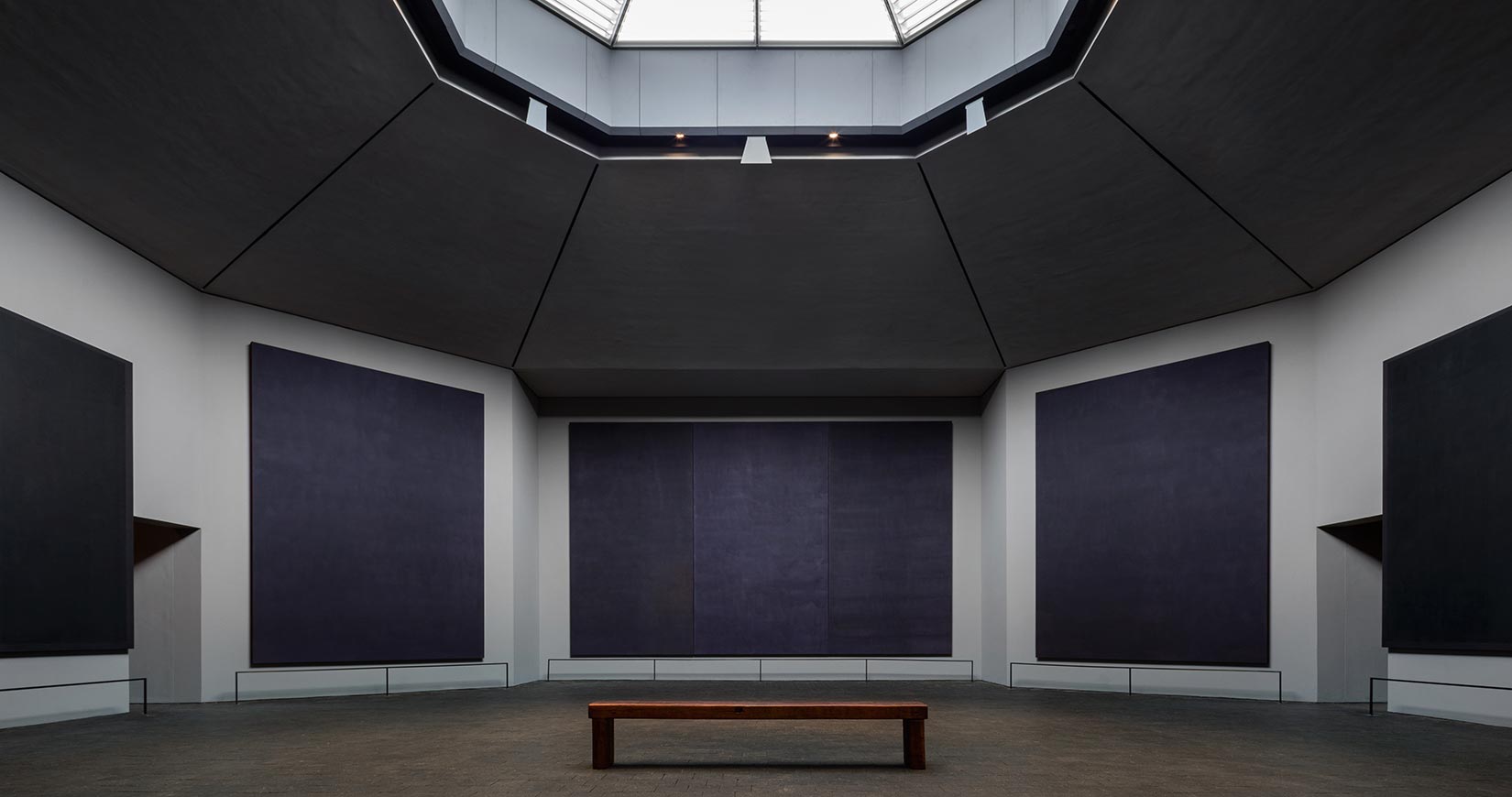
American painter Mark Rothko took immense satisfaction in the distinction between night and day. His innate love of contrasts is clear in his art, but also in his vision of the Rothko Chapel, located in Houston, Texas. In today’s pandemic-driven era, we can relate to Rothko’s positivity, and his tireless insistence that where there is darkness, there will always be light.
Rothko’s work has moved between dark and light and connects deeply with our observations and understanding of spirituality and the journeys that we experience. Or perhaps his art of seeing is so profound that to thoroughly understand his vision, we require a sensory form of intelligence. Human-centric lighting and environmental lighting are two of today’s most significant movements. Lighting designers are embracing environmental change and listening to the needs of nature – and the nurture – needed to move into a brighter future.
Evolved resolve
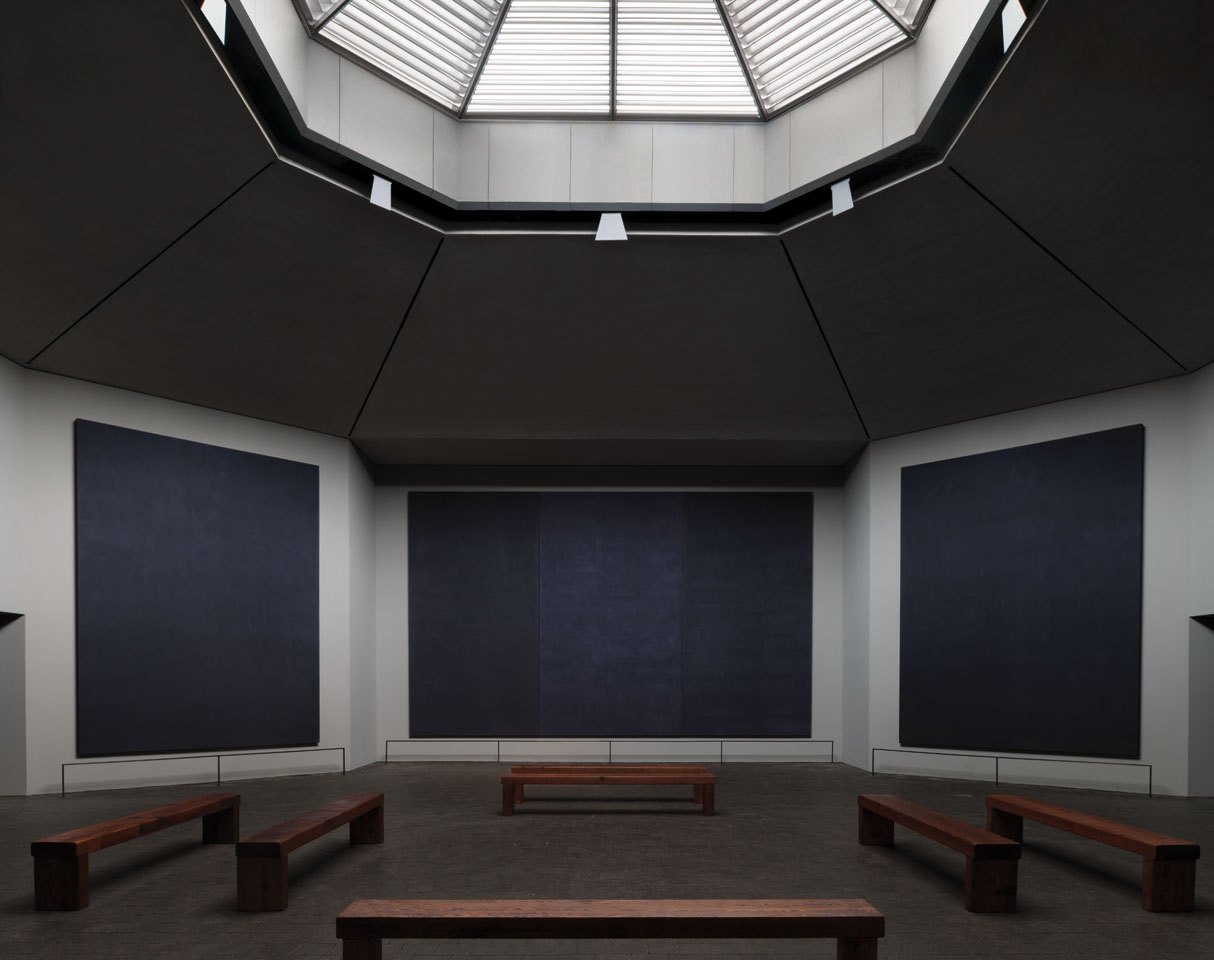
Rothko Chapel interior and new skylight. Photography by Paul Hester.
The lighting at the Rothko Chapel was never quite right; Rothko felt that it was poles apart from the light coming through the dirty windowpanes of his beloved New York studio. The Houston light was much stronger and brighter. Architecture Research Office (ARO)’s restoration changed the entire lighting experience, beginning outside with darkened pave stones at the entrance of the plaza, which reduced any glare and prepared the eye for the innermost sanctum of the space. The chapel’s lighting design by George Sexton Associates includes the installation of a new skylight that bathes 14 of the painter’s black but slightly colour-hued canvases in an ephemeral glow, using special glass and clever louvres that soften the intensity of the Texan sunlight. George Sexton Associates set digital lighting projectors into a nook around the skylight that bounce-focuses light onto the paintings with the use of intelligently placed mirrors. The placement alteration of the triptych avoids unnecessary shadows across the paintings, mimicking the lighting in Rothko’s studio.
Carefully considered human-centric lighting (HCL) affords beneficial physiological and psychological effects. HCL possesses biological and dynamic properties that can support human health, performance and overall wellbeing through intelligent, holistic planning and implementation.
According to Global Market Insights, the Human Centric Lighting Market size surpassed USD 1.25 billion in 2018 and is poised to grow at a CAGR of over 25% until 2025. The increasing popularity of new lighting technologies and activities related to the replacement of harmful conventional lights is supporting market growth. Research has also shown that controllable lighting further creates growth opportunities in the human-centric lighting market.
Designers today are producing new ideas, from industrial and sculptural movements to the most delicate ethereal and celestial designs, that also call for a sensory form of intelligence, quality of perception and an alternative way of thinking. They are paving the way and are positively glowing with new developments including combinations of resin and neon, the reinvention of heavy concrete, shellfish waste, laser-cut plastic and leather.
Family affair
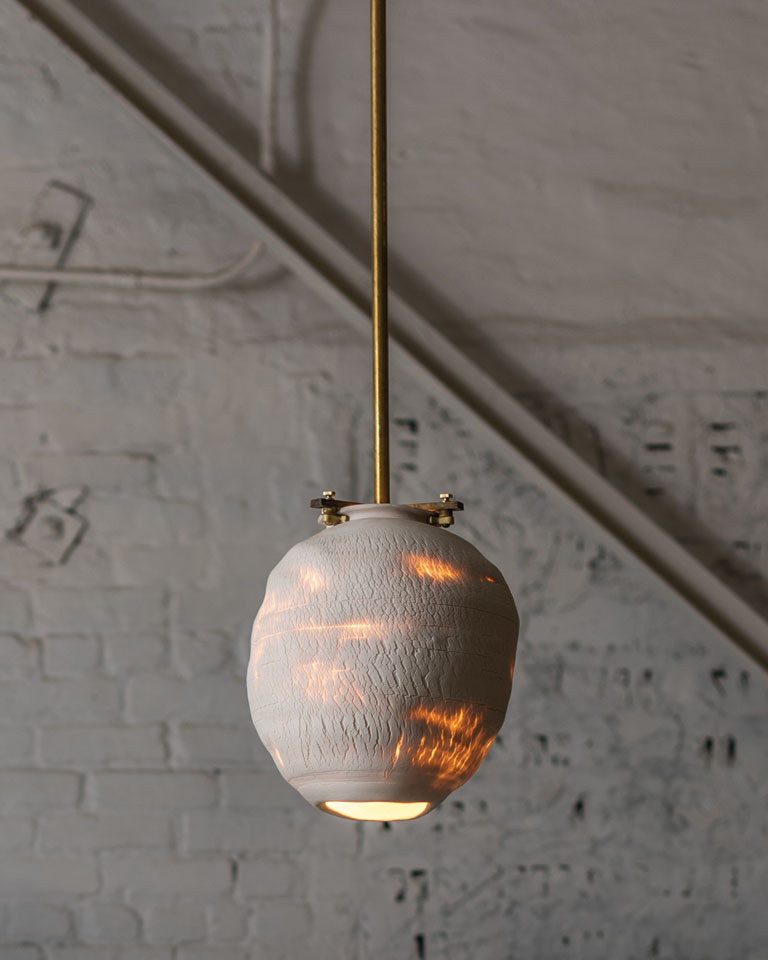
Photography by Alan Tansey
Jes Paone, renowned New York designer and architect, has joined forces with his ceramicist aunt, Anne Paone. Together, they have created the fragile Desert lighting collection that resembles the destruction of nature through its many cracks and crevices and is evocative of fissured river beds or the fine ashes of burnt trees. The collection is the first under the designer’s new eponymous architecture studio. When lit, the shades have an otherworldly glow and reveal the perfect imperfections of nature. The collection of pendant, table and sconce lighting features contrasting brass fittings.
For the Desert series, Jes and Anne experimented with the slip-casting process. Experimenting with different forms and challenging traditional processes, the duo hoped to achieve transparency and texture with their designs. Through a process of trial and error, Jes and Anne continued to hone their technique over a matter of years. Anne admittedly had no skills on the wheel and threw organic shapes by hand under the close direction of her nephew.
The result is therefore imperfect, unforced and unique. Whether it be cocoon-shaped sconces or spherical pendants, the lighting pieces are distinctive in their design – no two pieces will ever be the same. As a result of consistent technical failures, Anne has developed an expert wheel technique with a feather-like touch which is essential for the creation of the delicate, one-off lamps. Jes happily admits that he pushed Anne’s boundaries endlessly. He wanted more transparency, more glow and more wobbles. She continued to experiment and eventually found the perfect technique for the collection.
“The aspects of the object that emerge during the process of making something are really interesting to me,” Jes explains. “I would direct Anne to build shapes and I would focus on the aesthetics; but the end results, the wobbles, the cracks, the fails, they take on a life of their own. Gravity, centripetal forces and fire yield a finish that looks as though it was made by Mother Nature herself.
“The romance of clay being extracted from the ground, caressed and manipulated by hands of the maker, coupled with the inter-generational sharing of craft and aesthetics with my aunt, who comes from a different era of design, has made this project really rich and personal.”
Bubble wrap obsession
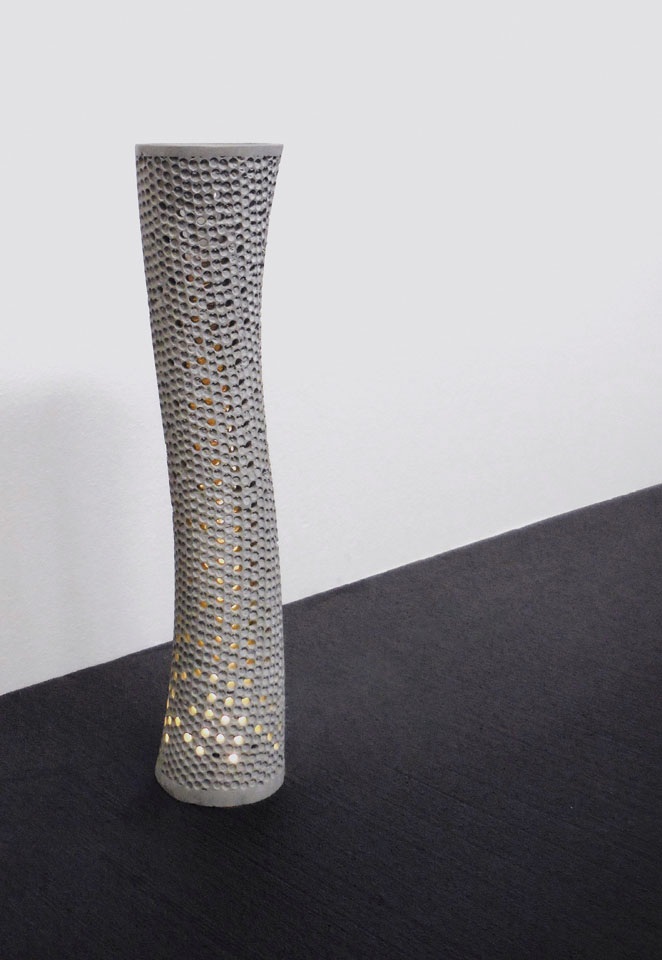
The London Design Festival this year saw the introduction of an obsession with bubble wrap, which inspired the design of the Bolla lights by London-based studio Hagen Hinderdael. The discarded bubble wrap forms the bumpy textured surface of the lamps. Studio founders Sofia Hagen and Lisa Hinderdael seamlessly pair product design and art, exploring the relationships between lighting and global issues. Each product tells of a journey and is sourced sustainably and manufactured locally.
Both designers have a background in architecture and interiors. Hagen and Hinderdael work closely with local artisans to combine skilled methodologies with sustainable materials and cutting-edge technology; producing elements and experiences that bear the incentive of a continuous afterlife.
The Bolla lamp highlights the need for a more circular economy and replaces the traditional ‘take-make-waste’ cycle of creation and consumption, tackling the need to cut the use of plastic packaging, most of which is poisonous and non-degradable. Bolla exemplifies the essence of the ‘waste not, want not’ philosophy. Cast from bubble wrap-imprinted formwork, the light concrete aggregate features the imprints of salvaged bubble wrap, with tiny holes punctuating the exterior of the light. These holes are cut using CNC technology routers.
Hagen Hinderdael joined forces with Cemento material scientists and custom-made the aggregate – an innovative mixture of concrete and recycled plastic. Various coloured pigments are incorporated into the mixture to ensure that the lamp complements a number of different interior settings.
The Bolla lamps are organic in shape and softly spiral upwards to a height of 70 cm. The lamps are designed as floor lights but can be adapted into a pendant light or wall sconce. The perforations that dot the lamp allow the internal light to shine through, creating an effervescent and eye-catching glow. Hagen Hinderdael studio developed a unique script to work out the exact placement for the holes.
In the event of any breakage, the lamps can be returned to the lighting suppliers, who will then reuse the materials to make another light. This service allows Bolla to avoid valuable materials ending up in a landfill and furthers the narrative of a continuous afterlife and full circle design.
Bacterial projections

Lionne van Deursen focuses on material research and product design. Her studio conducts experiential research and offers an understanding of the possibilities of new materials. She is currently studying a material made of bacterial cellulose.
All of her products are handmade, and the materials are organically grown in her studio. Her designs not only consider the material but also the sustainability of the production process. She uses each material as efficiently as possible, creating little waste while using organic and natural pigments to dye the leather-like sheets of bacterial cellulose.
Bacterial cellulose is a biodegradable material made using yeast and bacteria, and each sheet holds a different colour and translucency, due to the unpredictability of the manufacturing and design processes.
The studio’s first application of the material is a range of lamps called Imperfect Perfection. Each lamp diffuses the light source, and the variations of each sheet are enhanced using natural pigments and varying textures from the handmade process.
Well established
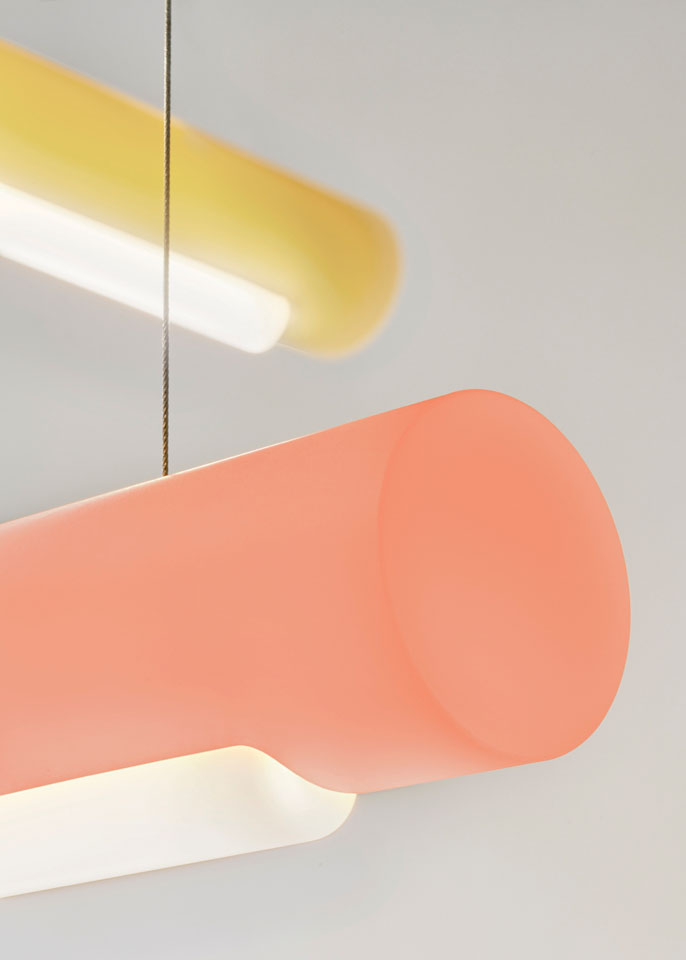
Photo: PimTop Studio
British brand Established & Sons has commissioned Rotterdam-based designer Sabine Marcelis to create two lights formed using pastel-hued resin cylindrical bars. The bio-epoxy resin is made using by-products from the agricultural industry. Each light is a cylindrical tube over a metre in length. The translucent yellow and coral Aura lights take their name from the warm glow they emit when illuminated.
Sabine Marcelis is forever in search of magical moments within materiality and manufacturing processes, resulting in the creation of unexpected experiences. The designer has a specific studio for materials, installations and objects. Her mission is to consciously make lighting available to a broader audience in a sustainable manner.
Established & Sons, which recently launched a new online store that is home to various designer collaborations, has been studying the increasingly blurred lines between living and working environments. The Aura lights are part of a new collection developed as a reaction to new ways of living.
Lines are becoming blurred as lighting design transitions effortlessly between living and working ideals. The lights are suspended from the ceiling and can be clustered in a group composition or positioned alone. The light emitted is ambient and comfortable on the eyes, making it suitable both for home-working and peaceful living spaces.
The Latest
Textures That Transform
Aura Living’s AW24 collection showcases the elegance of contrast and harmony
Form Meets Function
Laufen prioritises design, functionality and sustainability in its latest collections
Preserving Culture, Inspiring Creativity
Discover the Legacy of a Saudi Art Space: Prince Faisal bin Fahd Arts Hall explores the Hall’s enduring influence on the cultural fabric of Saudi Arabia
Channelling the Dada Spirit
Free-spirited and creative, The Home Hotel in Zurich injects a sense of whimsy into a former paper factory
id Most Wanted- January 2025
Falaj Collection by Aljoud Lootah Design
Things to Covet in January
identity selects warm-toned furniture pieces and objets that align with Pantone’s colour of the year
Shaping the Future of Workspaces by MillerKnoll
Stacy Stewart, Regional Director Middle East & Africa of MillerKnoll discusses the future and evolution of design in workspaces with identity.
Shaping Urban Transformation
Gensler’s Design Forecast Report 2025 identifies the top global design trends that will impact the real estate and built environment this year
Unveiling Attainable Luxury
Kamdar Developments has launched 105 Residences, a new high-end development in Jumeirah Village Circle.
The Muse
Located in the heart of Jumeirah Garden City, formerly known as ‘New Satwa’, The Muse adds to the urban fabric of the area
Cultural Immersion Meets Refined Luxury
The Chedi Hegra opens its doors in AlUla’s UNESCO World Heritage Site
Redefining Coastal Luxury
Sunshine Bay on Al Marjan island combines seaside views, exceptional design, and world-class amenities to create a unique waterfront haven
















